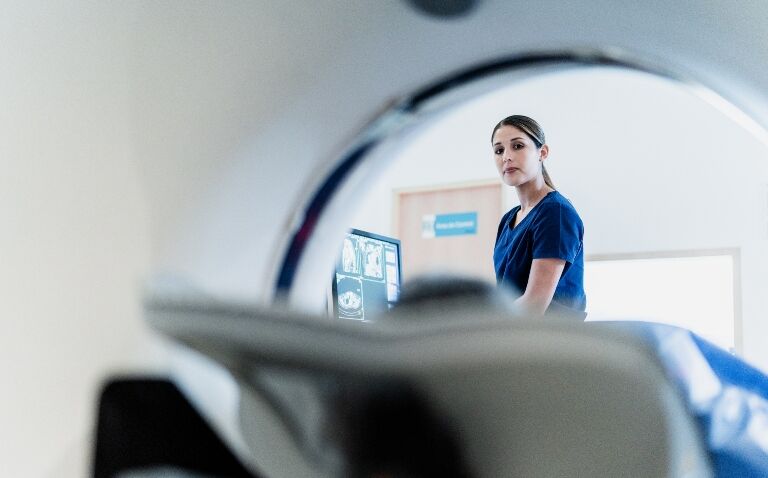Patients in the UK with suspected myeloma experience inappropriate imaging compared to National Institute for Health and Care Excellence (NICE) guidance and geographical inequalities in cancer care, a new study has shown.
Researchers, led by Myeloma UK in partnership with King’s College London and the NHS, undertook a national survey to evaluate the provision of imaging for patients at the time of myeloma diagnosis.
The study was designed to evaluate how services within the NHS align with the NICE guidelines on first-line imaging practice for myeloma in the United Kingdom.
Patients diagnosed with myeloma between 2017 and March 2022 and their carers were invited to participate in the study. A total of 895 participants took part in an online survey from 4-14 March 2022 to determine how they perceived access to imaging.
Patients were found to be undergoing multiple imaging tests at diagnosis, with most myeloma patients offered more than one imaging test.
First-line MRI was used in 69.2% of respondents and nearly a third of the patients surveyed were not offered an MRI, despite NICE recommendations that this should be the first-line imaging service provided for suspected myeloma.
The imaging technique offered least often was 18F-fluorodexyglucose positron emission tomography/computed tomography (18F-FDG PET/CT) and was only offered to 23.1% of respondents.
A total of 48.7% of patients were offered a first-line skeletal survey. NICE recommendations state this should only be considered if whole‑body MRI and whole‑body low‑dose CT are unsuitable or the person declines them.
The researchers also found a geographical variation in myeloma imaging practice, for example with a skeletal survey being used more often in the east of England (57.9%) and Scotland (61.2%) than in south-east England (36.3%).
Given the relatively common non-adherence to NICE recommendations and the geographical variation in imaging practice, the researchers recommend that healthcare professionals continue to emphasise the superiority of MRI compared to a skeletal survey to drive improvements in care.
In addition, they state that there is a need to support healthcare professionals in delivering guidance-based recommendations and improving patient experience and outcomes.
Reference
Quinn, S C M et al. National myeloma patient survey shows continuing inappropriate imaging and geographical inequalities. British Journal of Radiology 2024; Aug 1: doi: 10.1093/bjr/tqae110.










